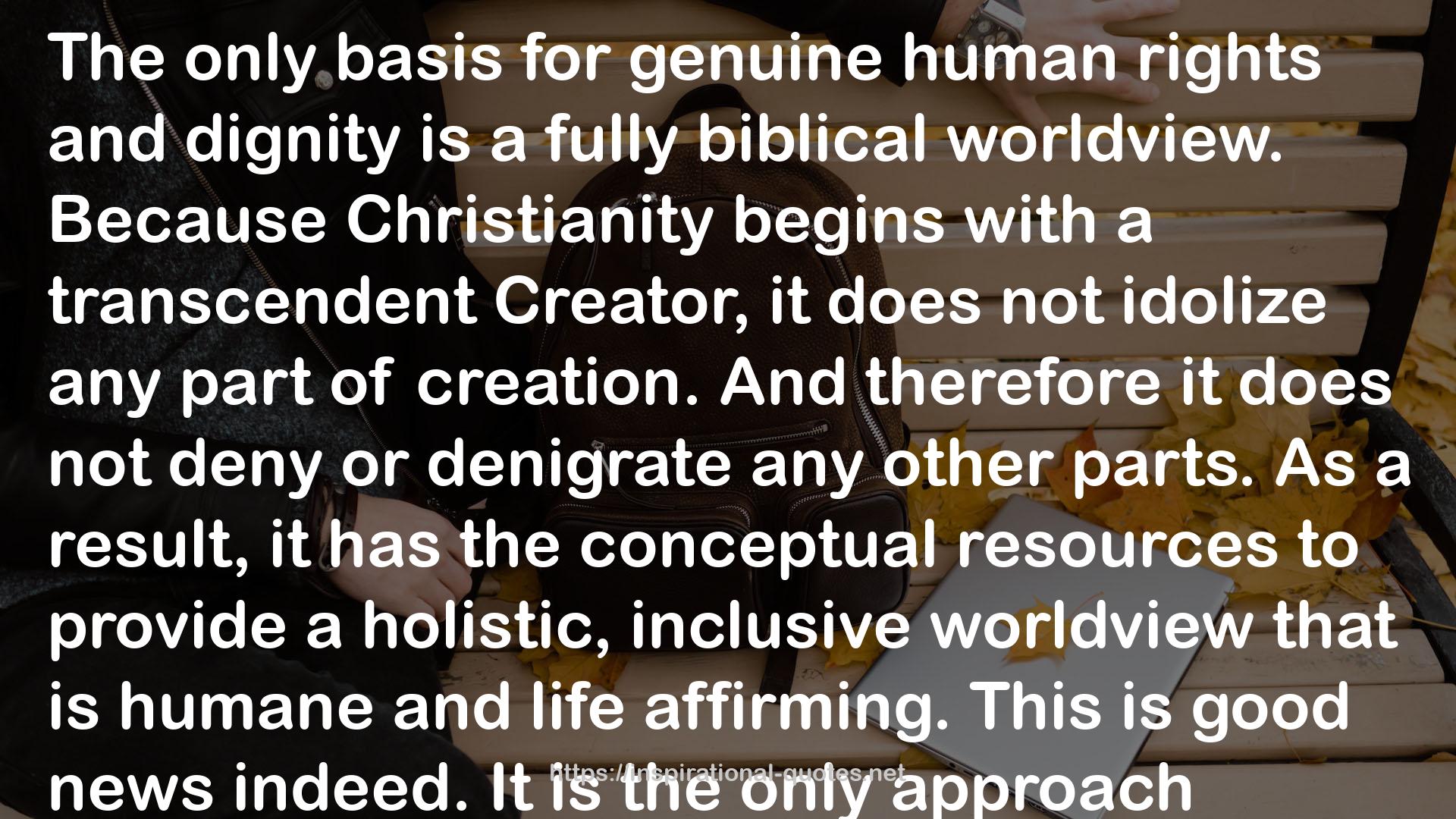23
" Richard Lovelace makes a compelling case that the best defense is a good offense. “The ultimate solution to cultural decay is not so much the repression of bad culture as the production of sound and healthy culture,” he writes. “We should direct most of our energy not to the censorship of decadent culture, but to the production and support of healthy expressions of Christian and non-Christian art.”10 Public protests and boycotts have their place. But even negative critiques are effective only when motivated by a genuine love for the arts. The long-term solution is to support Christian artists, musicians, authors, and screenwriters who can create humane and healthy alternatives that speak deeply to the human condition. Exploiting “Talent” The church must also stand against forces that suppress genuine creativity, both inside and outside its walls. In today’s consumer culture, one of the greatest dangers facing the arts is commodification. Art is treated as merchandise to market for the sake of making money. Paintings are bought not to exhibit, nor to grace someone’s home, but merely to resell. They are financial investments. As Seerveld points out, “Elite art of the New York school or by approved gurus such as Andy Warhol are as much a Big Business today as the music business or the sports industry.”11 Artists and writers have been reduced to “talent” to be plugged into the manufacturing process. That approach may increase sales, but it will suppress the best and highest forms of art. In the eighteenth century, the world nearly lost the best of Mozart’s music because the adults in the young man’s life treated him primarily as “talent” to exploit. "
― Nancy R. Pearcey , Saving Leonardo: A Call to Resist the Secular Assault on Mind, Morals, and Meaning
27
" Every religion offers an interpretation of the world, a worldview, a counterpart to the biblical narrative of creation, fall, redemption. Translated into worldview terms, creation refers to a theory of origins: Where did we come from? What is ultimate reality? Fall refers to the problem of evil: What’s wrong with the world, the source of evil and suffering? Redemption asks, How can the problem be fixed? What must I do to become part of the solution? These are the three fundamental questions that every religion, worldview, or philosophy seeks to answer.16 The answers offered by Romanticism were adapted from neo-Platonism.17 In neo-Platonism, the counterpart to creation, or the ultimate source of all things, is a primordial spiritual essence or unity referred to as the One, the Absolute, the Infinite. Even thinking cannot be attributed to the One because thought implies a distinction between subject and object—between the thinker and the object of his thought. In fact, for the Romantics, thinking itself constituted the fall, the cause of all that is wrong with the world. Why? Because it introduced division into the original unity. More precisely, the fault lay in a particular kind of thinking—the Enlightenment reductionism that had produced the upper/lower story dichotomy in the first place. Coleridge wrote that “the rational instinct” posed “the original temptation, through which man fell.” The poet Friedrich Schiller blamed the “all-dividing Intellect” for modern society’s fragmentation, conflict, isolation, and alienation. And what would redeem us from this fall? The creative imagination. Art would restore the spiritual meaning and purpose that Enlightenment science had stripped from the world. "
― Nancy R. Pearcey , Saving Leonardo: A Call to Resist the Secular Assault on Mind, Morals, and Meaning

